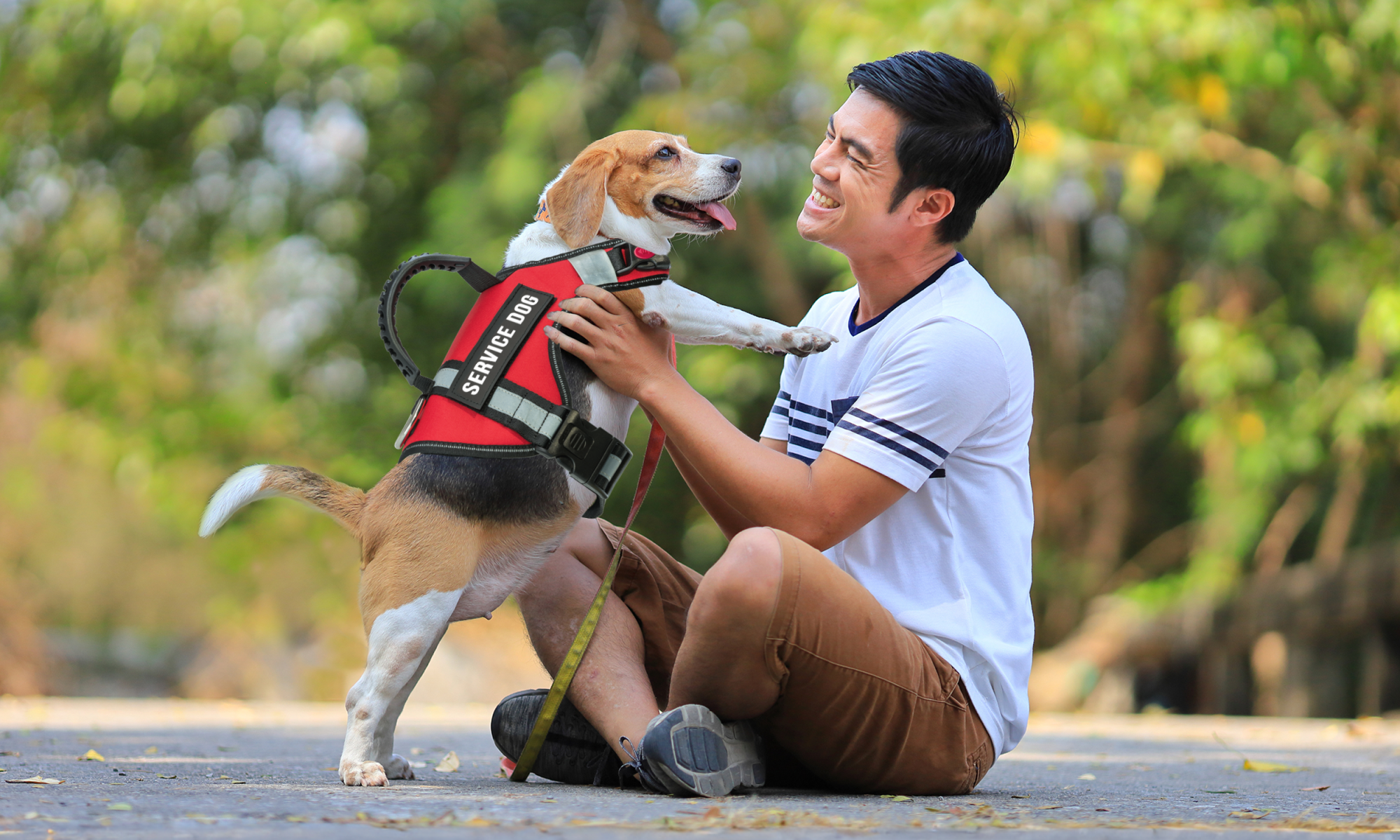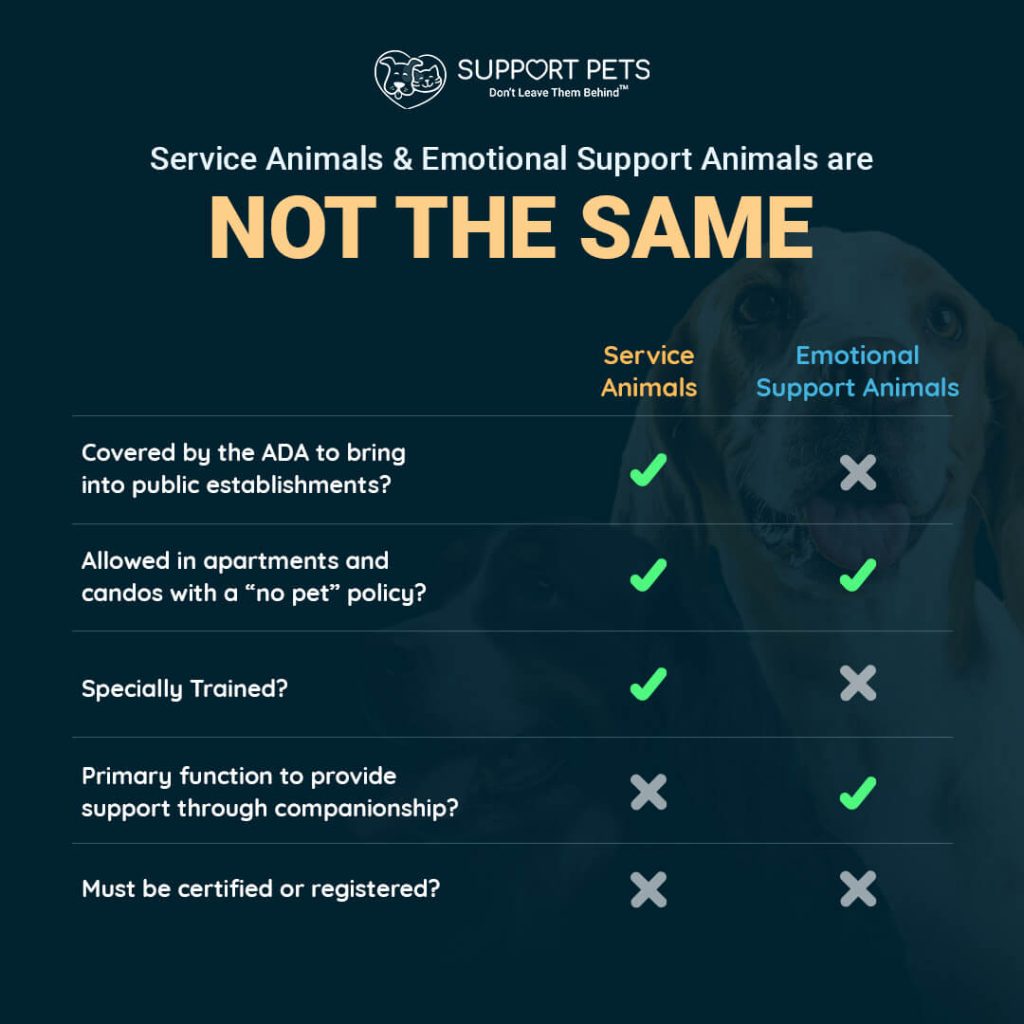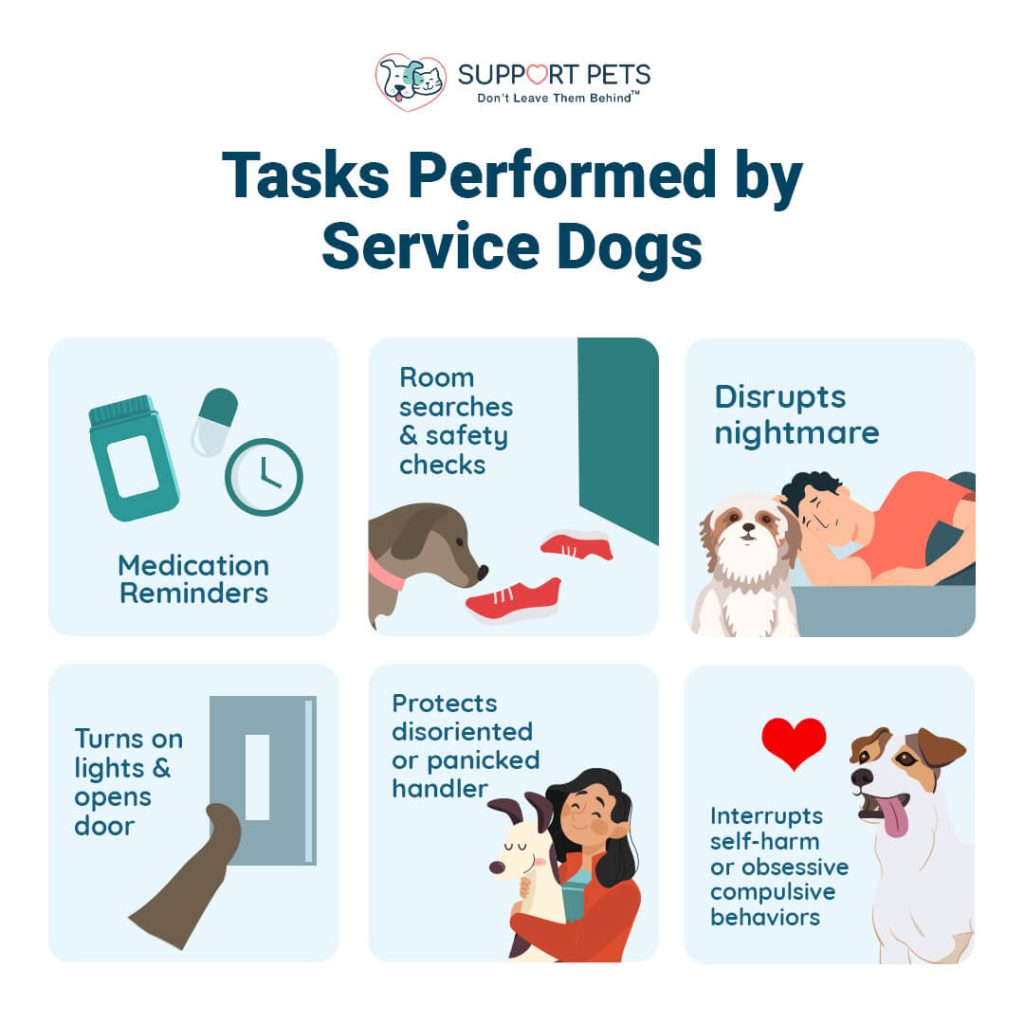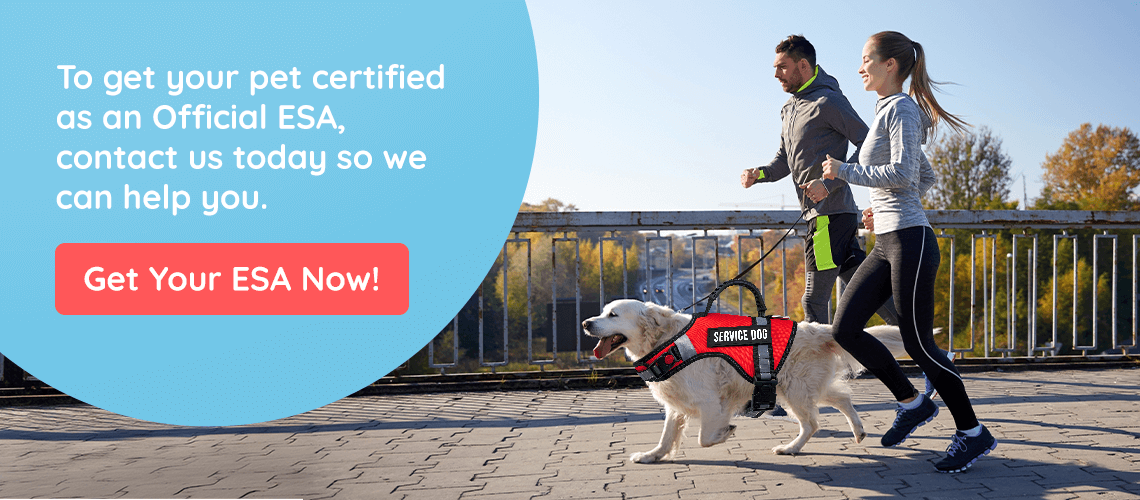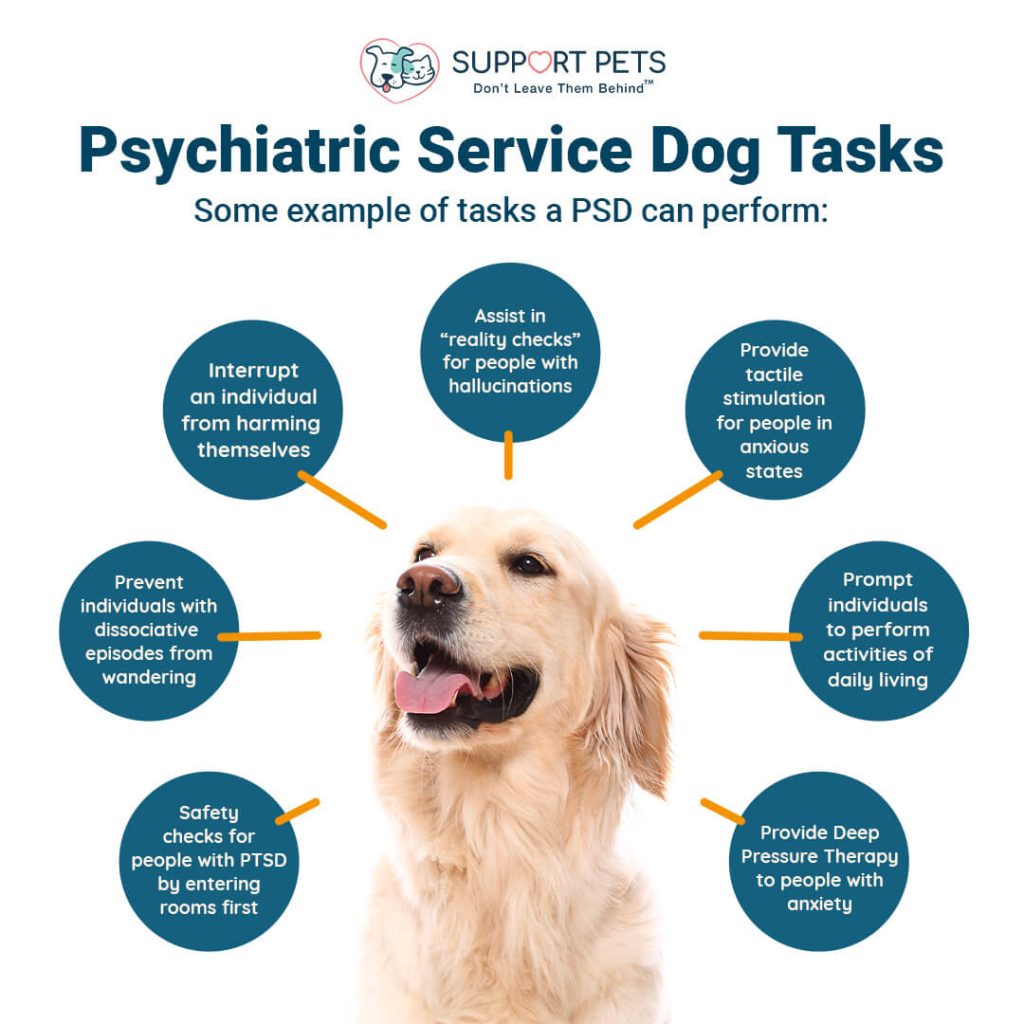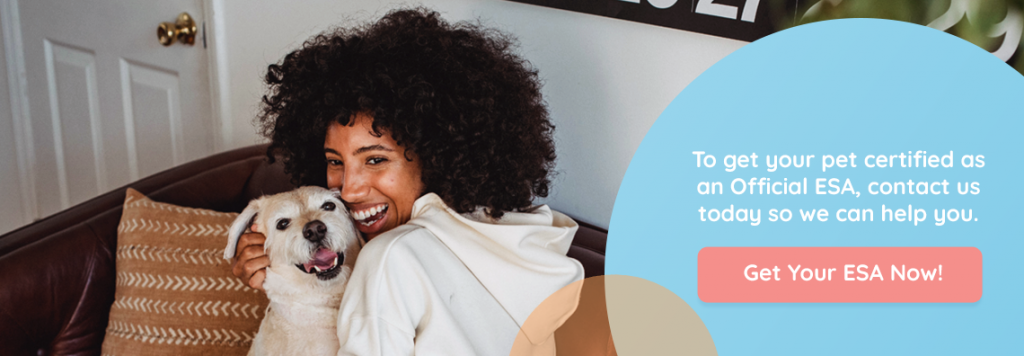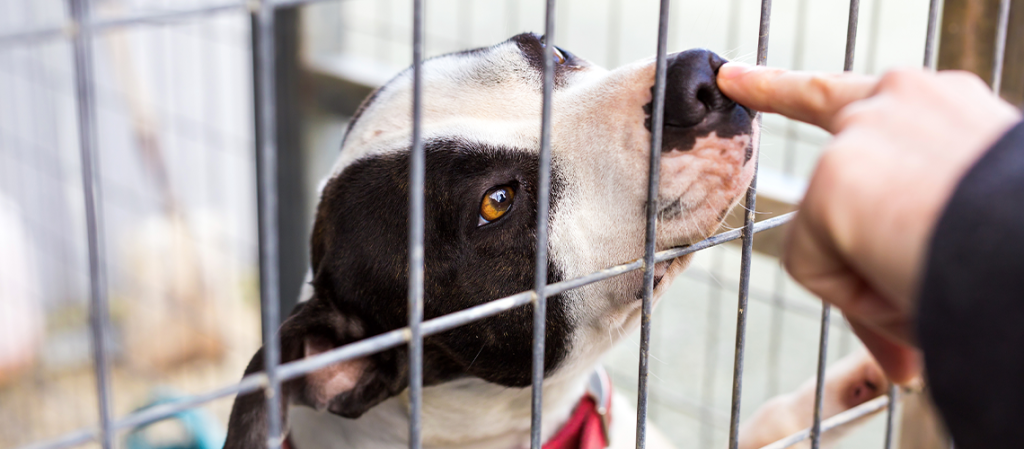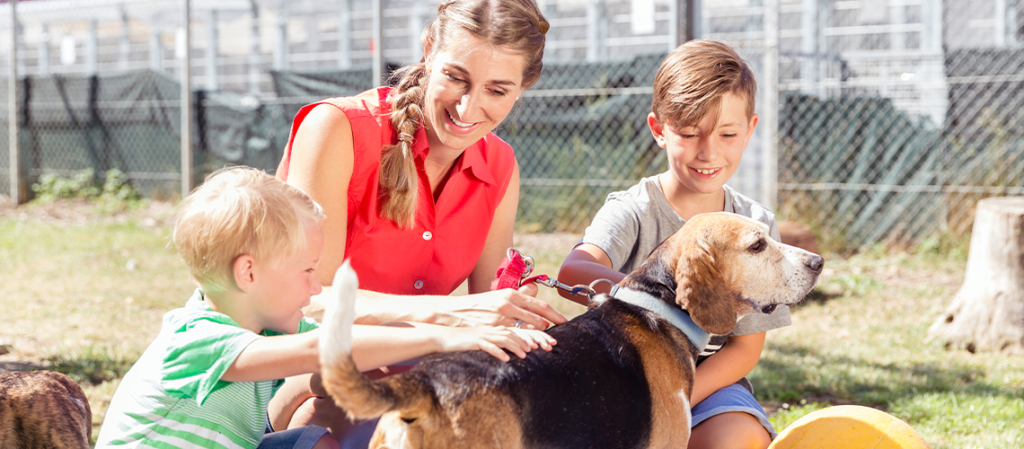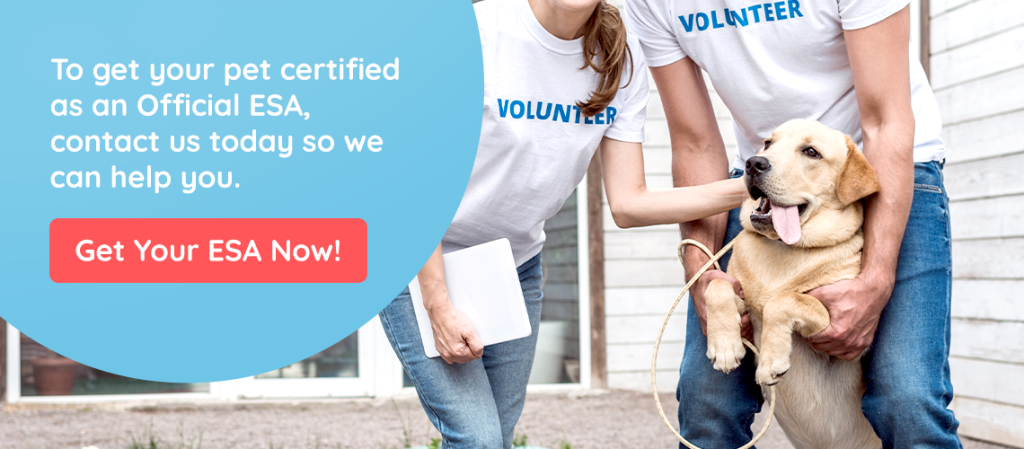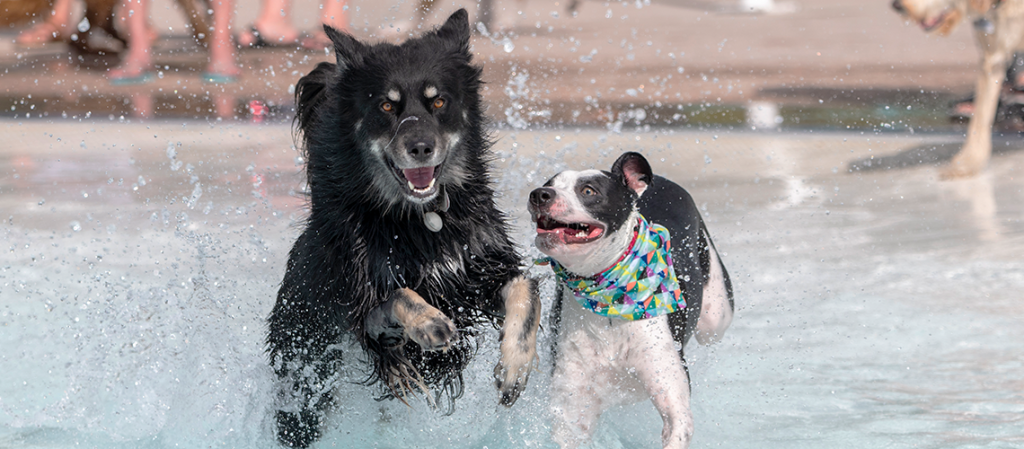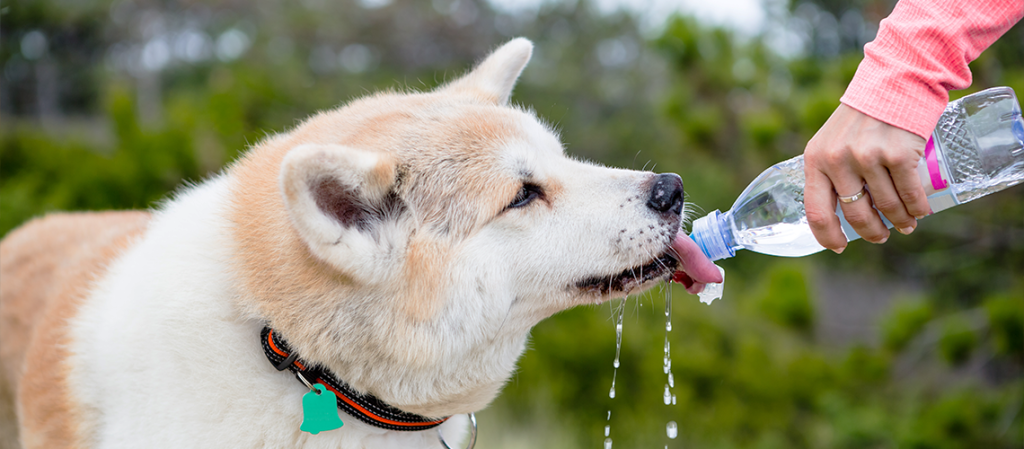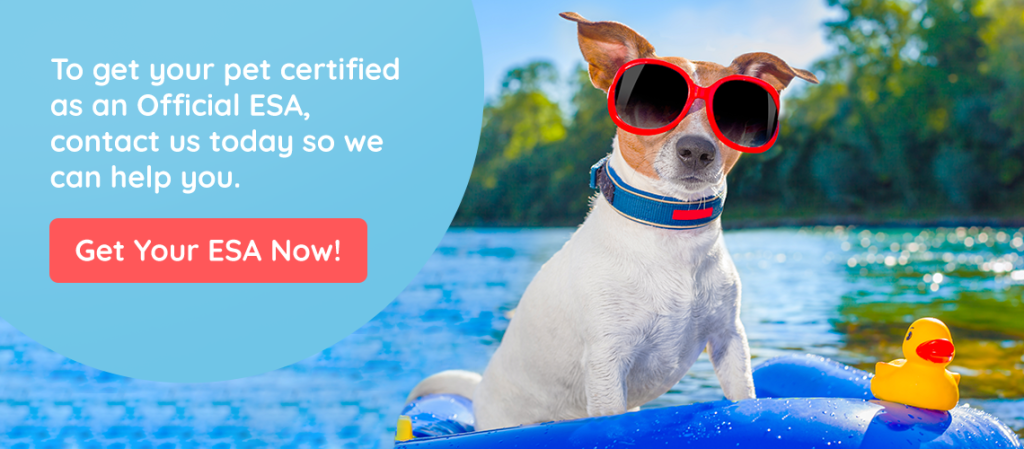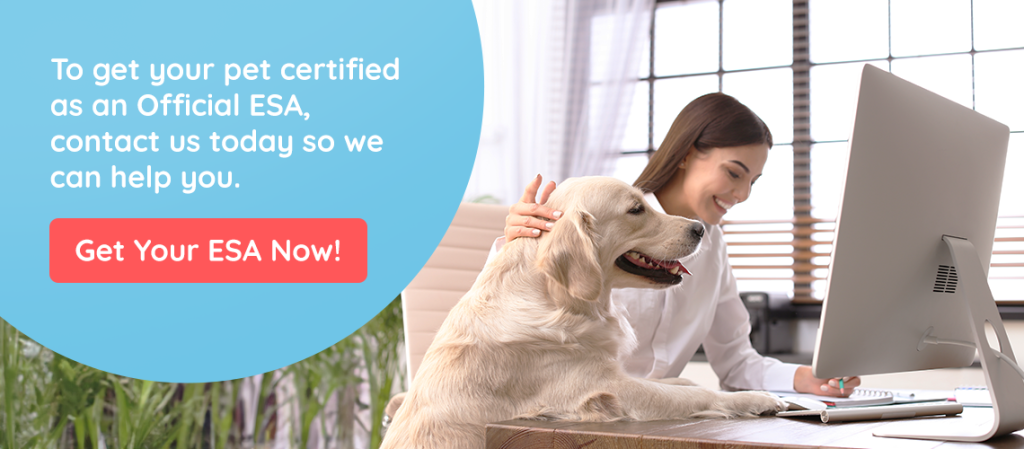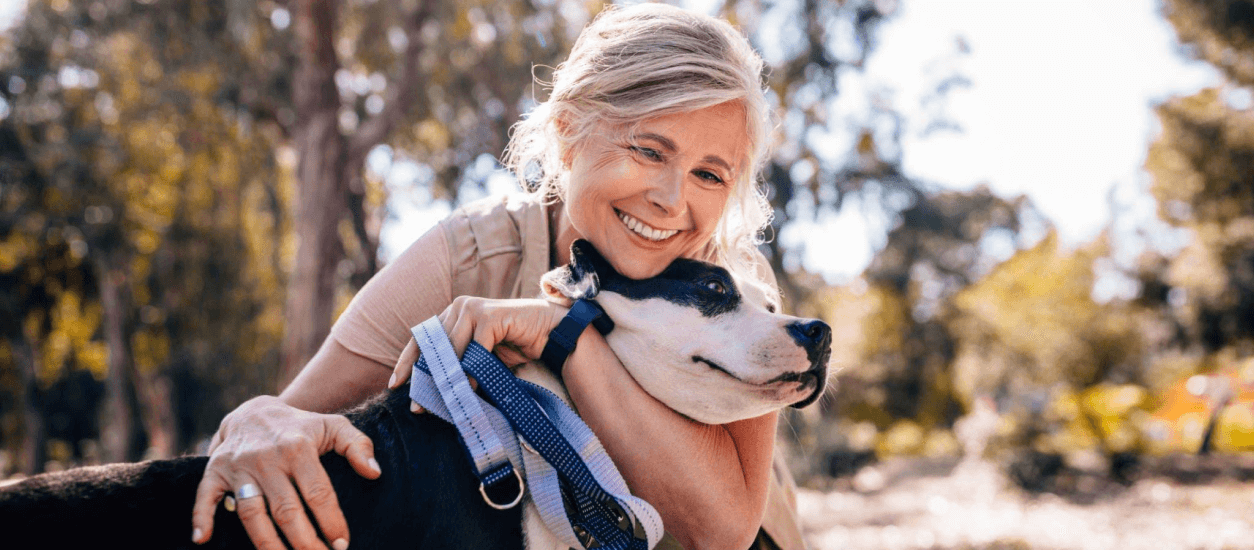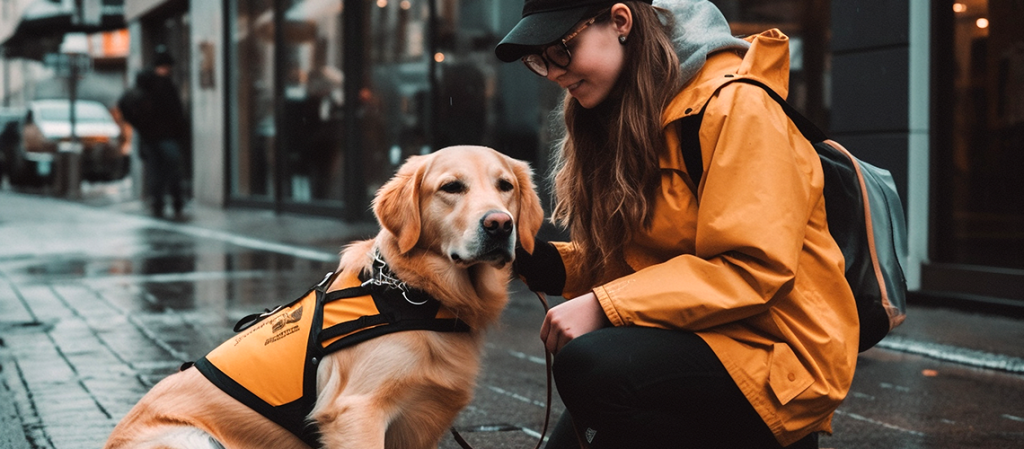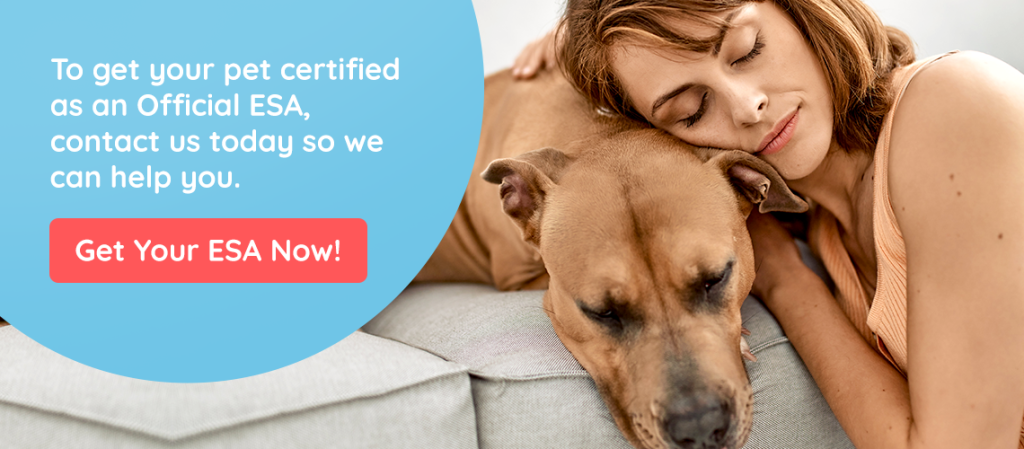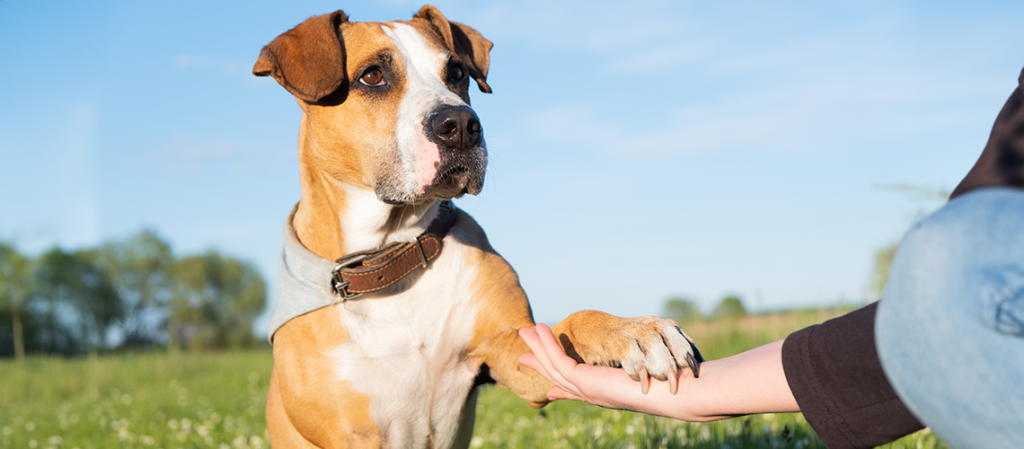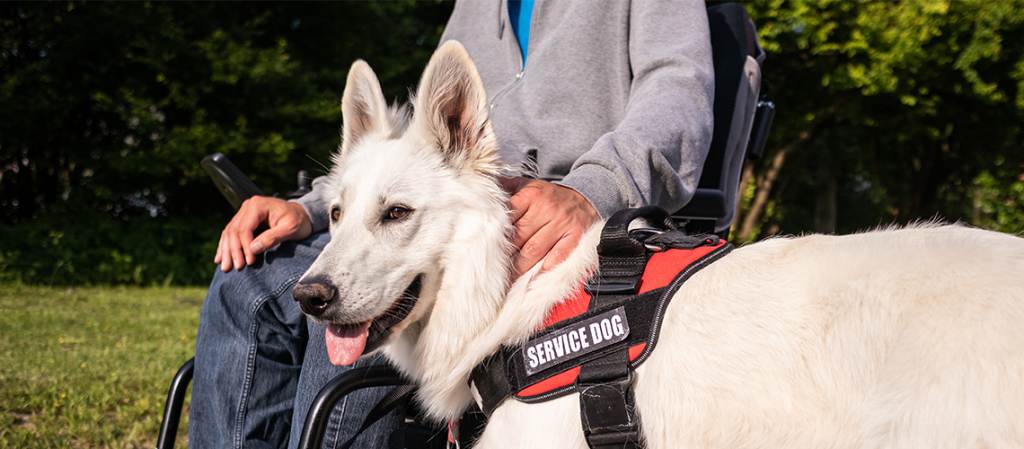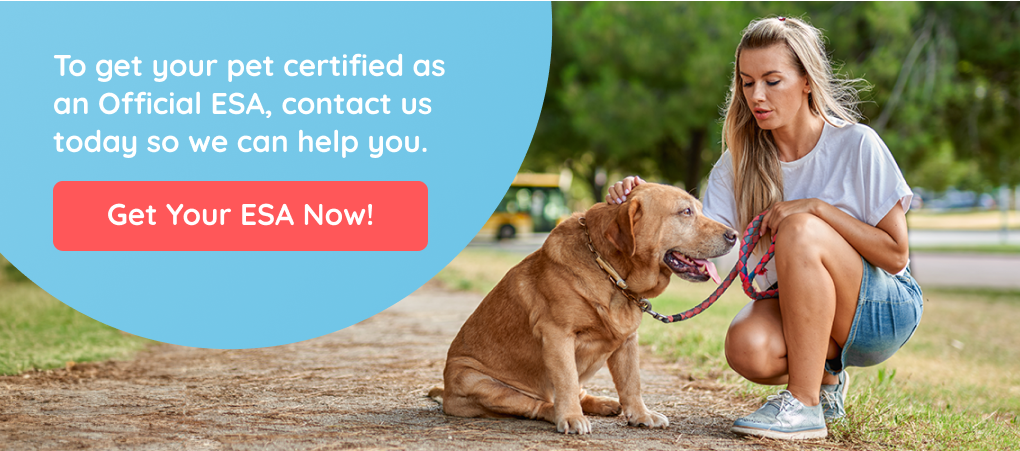Service dog vests are very important for showing that a dog is highly trained and performs specific tasks for people with physical disabilities. Knowing when and how to use a service dog vest can help make sure these service animals are noticed and respected for their important work.
Do Service Dogs Have to Wear a Vest?
The Americans with Disabilities Act (ADA) does not say that service dogs have to wear a vest or special ID in public spaces like restaurants and stores. However, many groups suggest using brightly colored vests for service dogs to make them easy to spot.
Can Anyone Buy a Service Dog Vest?
Yes, anyone can buy a service dog vest and put it on their dog. There is no law saying a service dog must wear a vest. This means no one checks if the owner or dog is real before selling the vests. But just putting a vest on a dog doesn’t make it a real service animal. Vests should only be used if your dog is a service dog or an emotional support animal (ESA). A dog needs to be highly trained to perform specific tasks to help someone with physical disabilities. Misusing a vest is illegal and can cause problems for those who rely on their service dogs.
Want your dog to perform life-changing tasks? Enroll in our Psychiatric Service Dog Training course now!
What Are the Benefits of Service Dog Vests?
Service dog vests offer many benefits for service animals, their owners, and the public. Even though they are not legally required, they provide clear advantages that help service dogs, including emotional support animals (ESAs), do their jobs better.
Clear Identification
Service dog vests help people see that a dog is a service animal, not a regular pet. This is important in public spaces like restaurants and stores where a service dog needs to perform specific tasks without interruptions. A vest shows the public that the dog is there to help with physical disabilities or provide emotional support.
Access to Public Spaces
The ADA says service dogs must be allowed in public spaces. A service dog vest helps business staff quickly know that the dog is a service animal, making it easier to enter places like stores and restaurants. This reduces confusion and unnecessary questions, making everyday life and travel less stressful for the handler.
Prevents Distractions
A vest shows that the dog is working and should not be disturbed. Many vests have warnings like “Do Not Pet,” which help stop people from distracting the dog. This is very important because distractions can stop the dog from doing its job.
Work and Play Separation
For the dog, wearing a vest is a signal that it is time to work. When the vest is off, the dog knows it can relax and play like a regular pet. This separation is good for the dog’s well-being, making sure they get rest while also being ready to help their owner when needed.
Enhanced Visibility
Choosing a brightly colored service dog vest makes the dog easy to see in public spaces. Bright colors help others recognize the dog as a service animal, supporting the dog’s role and responsibilities
Additional Information
Many service dog vests have patches or pockets for ID cards that explain the dog’s purpose and tasks. These can include information from the ADA about the legal rights of service dogs and their handlers, making sure the dog’s role is clear and following the Disabilities Act.
What is a Service Dog?
A service dog is a highly trained dog that helps people with physical or emotional disabilities. These dogs perform specific tasks to assist their owners. Only dogs are recognized as service animals by the ADA. The ADA, passed in 1990, protects the rights of people with disabilities, letting them bring their service dogs into public spaces like restaurants and stores. These dogs are legally required to have access to public areas to help their owners.
Transform your dog into an amazing helper with our Psychiatric Service Dog Training course.
Service dogs are different from emotional support animals (ESAs). While ESAs provide comfort just by being with their owner, they do not have the same access to public places. Service dogs are trained to perform specific tasks, such as guiding the blind, pulling wheelchairs, calming people with PTSD or anxiety, and alerting their handlers to seizures.
Different types of service dogs trained to perform these tasks:
- Seeing-Eye Dogs: Help people who are blind or have low vision.
- Hearing Assistance Dogs: Alert people who are deaf or hard of hearing to important sounds.
- Mobility Assistance Dogs: Help people with physical disabilities by doing tasks like opening doors or getting objects.
- Diabetic Alert Dogs: Warn their owners of low blood sugar levels.
- Psychiatric Service Dogs: Help people with mental health conditions like PTSD or anxiety.
What Tasks Do Service Dogs Perform?
Service dogs are highly trained to do specific tasks that help their owners with physical disabilities. These dogs are not only companions but also do important jobs that let their owners live more independently and safely.
Here are some tasks that service dogs can do:
- Medication Reminders: A service dog can remind its owner to take their medicine on time. This is very helpful for people who might forget because of their health conditions.
- Room Searches and Safety Checks: Service dogs can check rooms for their owner to make sure they are safe. This is useful for people who might be scared or disoriented.
- Disrupting Nightmares: Some service dogs are trained to wake their owners up from nightmares, which can help those with PTSD.
- Turning on Lights and Opening Doors: Service dogs can turn on lights and open doors, making it easier for their owners to move around their homes, especially at night or in emergencies.
- Protecting Disoriented or Panicked Handler: A service dog can help protect and calm down their owner if they are feeling disoriented or having a panic attack.
Where Can Service Dogs Go?
According to the ADA, service dogs are legally required to have access to public spaces. This means your service dog must be allowed in many places, making sure they can help you wherever you go.
Public Spaces Where Service Dogs Are Allowed:
- Restaurants: Your service dog can accompany you to any dining establishment.
- Mall and Retail Outlets: Service dogs are allowed in all shopping centers and retail stores.
- Hospitals: These highly trained dogs can be with you even in medical facilities.
- Public Transportation: Service animals are allowed on buses, trains, and other public transit systems.
- Libraries & Schools: Your service dog can help you in educational places.
- Theaters: Enjoy movies and shows with your service animal by your side.
- Grocery Stores: Service dogs are welcome in all grocery and food stores.
- Hotels: Service dogs are allowed to be with their owners during their stay in hotels.
- Gyms, Bowling Alleys, Arenas, Stadiums & Other Entertainment Facilities: Service dogs must be allowed in these fun places.
FAQs About Service Dog Vests
Where Can I Get a Service Dog Vest?
Service dog vests can be bought from many online stores and pet supply shops. When choosing a service dog vest, look for high-quality materials that are strong and comfortable for your dog. Many websites offer options to add patches that say if your dog is a service dog, therapy dog, or service dog in training. Ready to take the next step? Enroll in our Psychiatric Service Dog Training course today!
What Information Should Be on a Service Dog Vest?
Service dog vests can have patches or labels that say “Service Dog,” “Service Dog in Training,” or “Therapy Dog.” Some vests also have ID cards with details about the dog’s tasks and the handler’s rights under the ADA. This information can help the public understand that the dog is highly trained to perform specific tasks and should not be distracted.
What Should I Consider When Choosing a Service Dog Vest?
When choosing a service dog vest, think about the following factors:
- Comfort: Make sure the vest is comfortable for your dog to wear for a long time.
- Visibility: Choose brightly colored vests to make your dog easy to see.
- Durability: Pick a vest made from strong materials that can handle daily use.
- Customizability: Look for vests that let you add patches with specific information about your dog’s role and tasks.
Service dog vests play an important role in showing and helping highly trained dogs that do specific tasks for people with physical disabilities. By choosing the right vest, you can make sure your service dog is noticed and respected, making everyday life and travel less stressful for both you and your service animal.
Want to make sure your dog is ready for its important role? Enroll in our Psychiatric Service Dog Training course now!


